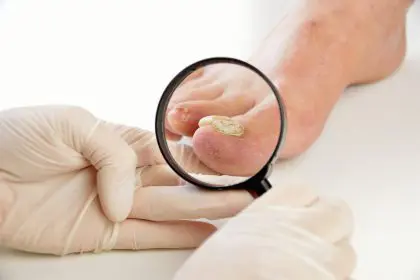Remember that tiny click in your wrist you felt while texting last week? Or that fleeting ache in your knuckle when you opened a stubborn jar? If you’re like most people, you probably shrugged it off and went about your day. After all, who has time to worry about such minor inconveniences when there are deadlines to meet and shows to binge?
But here’s the uncomfortable truth your body’s been trying to tell you: those seemingly innocent joint twinges are actually early warning flares, and ignoring them is like muting the smoke alarm while your house slowly begins to smolder.
The whispers before the scream
Your body doesn’t just jump from perfectly fine to completely broken. Before major joint problems announce themselves with debilitating pain and limited mobility, they typically start as subtle signals that something’s not quite right. Think of these minor aches as your body’s first attempt at polite communication.
The progression pattern
Minor joint pain typically follows a predictable path if left unaddressed. What begins as an occasional twinge during specific movements gradually becomes more frequent and intense. That knuckle that only bothered you when opening jars now aches when you’re typing. The wrist that clicked occasionally now complains daily.
This progression isn’t just about increasing pain. Your body begins compensating for these troubled spots, changing how you move and shifting stress to other joints. Suddenly, it’s not just your wrist that hurts but your elbow and shoulder too, as they pick up the slack for the weakened link in your kinetic chain.
The inflammation cascade
When a joint signals distress, inflammation is often at the scene. While acute inflammation is your body’s natural healing response, chronic low-grade inflammation becomes problematic. It’s like having a cleanup crew that arrives but never leaves, gradually causing more disruption than the original mess.
Over time, this persistent inflammation can damage the joint structures themselves, including cartilage and surrounding tissues. What could have been addressed with simple interventions now requires more aggressive treatment approaches.
Why we brush off joint warnings
Despite our bodies’ best efforts to alert us to potential problems, we’ve become remarkably skilled at ignoring these signals. Understanding why helps break this harmful pattern.
The “no pain, no problem” mindset
Many of us have internalized the belief that pain must be severe to warrant attention. Minor aches don’t seem legitimate enough to justify concern, especially in our busy lives. This thinking creates an artificial threshold where only debilitating pain deserves acknowledgment.
Fear of what we might discover
Let’s be honest. Sometimes we ignore joint pain because we’re afraid of what addressing it might entail. Will we need to stop activities we enjoy? Are we facing signs of aging we’d rather not confront? Does this mean expensive treatments or time-consuming therapy? Avoidance feels easier in the moment, even if it ultimately leads to worse outcomes.
The myth of inevitable decline
Perhaps most insidiously, many people believe joint pain is simply an unavoidable part of getting older. While age does bring changes to our bodies, accepting joint pain as inevitable can prevent us from taking proactive steps that could maintain joint health for decades longer.
The hidden costs of ignoring joint signals
When we silence those early warning systems, the consequences extend far beyond the original troublesome joint. The ripple effects can impact virtually every aspect of your life.
Functional limitations
As joint problems progress, everyday activities become increasingly difficult. Tasks you once performed without thought now require planning and adaptation. Opening containers, typing, climbing stairs, or simply getting dressed can become challenging ordeals.
Activity avoidance
When certain movements cause pain, the natural response is to avoid them. Over time, this leads to a narrowing of your physical world. The tennis racket gathers dust. The garden waits untended. Dance invitations get declined. Your life contracts as your joint problems expand.
The sleep connection
Progressed joint pain often disrupts sleep, creating a vicious cycle where poor sleep reduces your body’s healing capacity and pain tolerance. This sleep deficit then contributes to worsening pain and impaired function during waking hours.
Mood and mental health impacts
Living with chronic pain takes a toll on your psychological wellbeing. Research consistently shows connections between persistent pain and increased rates of anxiety and depression. What began as a physical issue gradually becomes an emotional burden as well.
Small steps with big returns
Addressing minor joint pain doesn’t require dramatic lifestyle overhauls. Simple, consistent actions can help interrupt the progression from minor nuisance to major problem.
The two-day rule
If a joint continues to bother you for more than two days, consider it worthy of attention. This doesn’t mean rushing to specialists, but it does warrant basic self-care steps and monitoring. This simple threshold helps you distinguish between temporary soreness and potential problems.
Movement as medicine
Contrary to what many assume, appropriate movement often helps resolve minor joint issues. Gentle, pain-free motion increases circulation to the area and prevents stiffness without overloading sensitive tissues. Think of it as keeping the joint’s internal environment fresh and nourished.
Strength as protection
Building strength in the muscles surrounding troubled joints creates natural support systems. These muscles act as shock absorbers and stabilizers, reducing stress on the joint structures themselves. Even minimal strength training can yield significant protective benefits.
The ice and heat toolkit
Cold therapy can help manage acute inflammation, while heat often works better for chronic stiffness. Learning when to apply each of these simple interventions gives you powerful tools for addressing discomfort before it escalates.
When to bring in reinforcements
- While many minor joint issues respond well to self-care, knowing when to seek professional guidance is equally important. These signposts can help you make that decision.
- Pain that consistently wakes you from sleep deserves professional evaluation. Night pain often signals more significant inflammation or tissue damage that needs specific treatment.
- Joint pain accompanied by noticeable swelling, redness, or warmth suggests active inflammation that may require intervention beyond self-care measures.
- When pain begins affecting your ability to perform necessary daily activities or persists despite basic self-care for more than two weeks, professional assessment can prevent further deterioration.
The prevention proposition
The truth is, many joint problems can be prevented entirely with proactive approaches to joint health. Think of it as maintenance rather than repair.
Regular movement that takes joints through their full range of motion helps maintain flexibility and ensures all surfaces receive nourishment. Your joints quite literally need movement to stay healthy.
Balanced strengthening around joints creates optimal support systems that distribute forces evenly and protect vulnerable structures.
Attending to proper mechanics during daily activities and exercise ensures joints aren’t subjected to unnecessary stress. How you move matters as much as how much you move.
Your body’s subtle signals deserve your attention. That minor twinge you felt yesterday isn’t just an inconvenience to be ignored—it’s valuable communication from a body that’s trying to maintain its function for the long haul. By listening early and responding thoughtfully, you can transform what might have become a major joint problem into a minor footnote in your health story.
















